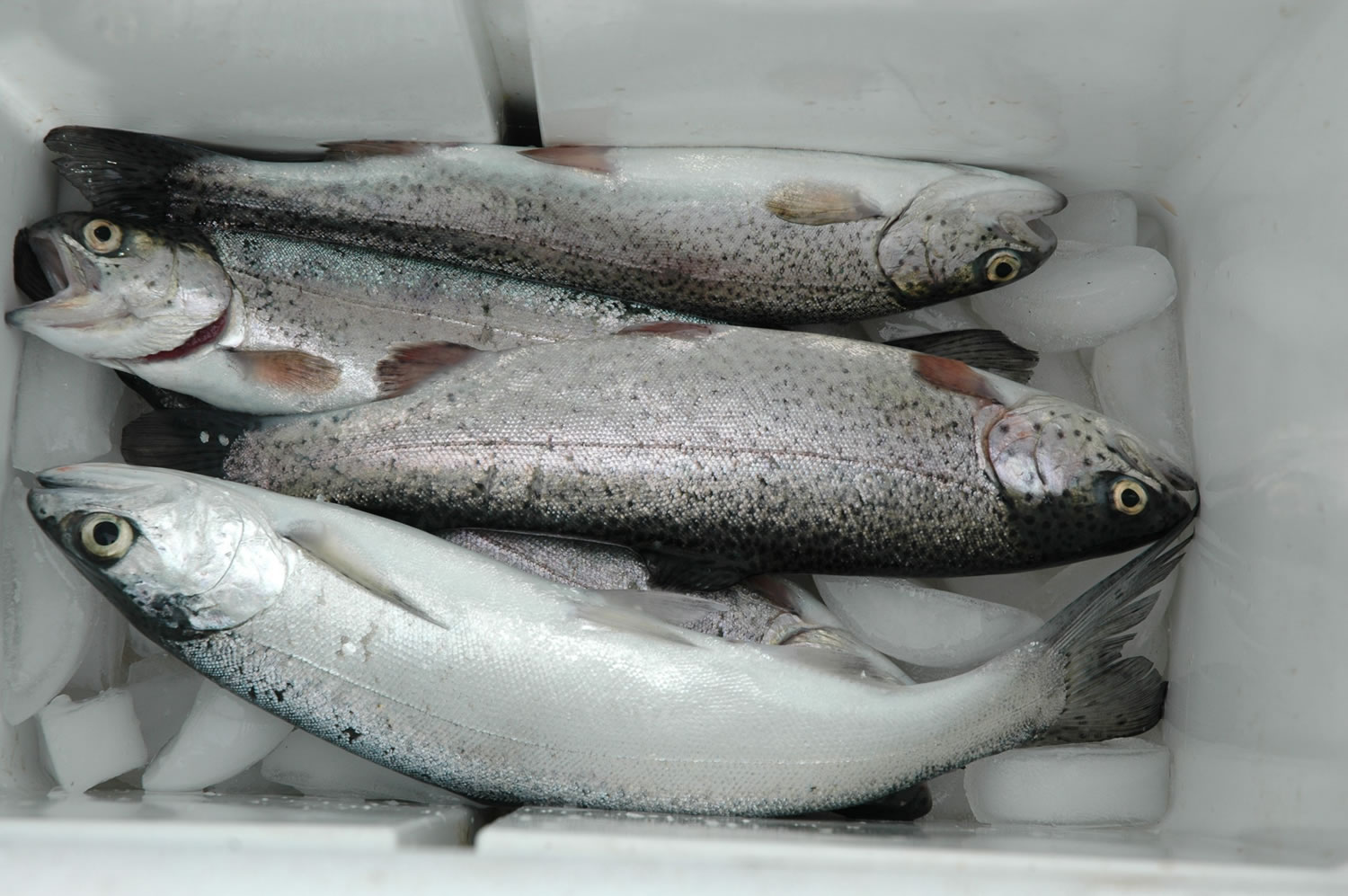Anglers at Swift Reservoir may be allowed to use two rods only during the first three days of the 2012 fishing season — and they’d better know the difference between a trout and a young chinook or coho salmon.
The Washington Department of Fish and Wildlife is proposing regulation changes for the 4,500-acre reservoir on the upper North Fork of the Lewis River in its 2012-13 sport-fishing package.
Changes effecting the South Fork of the Toutle River, Salmon Creek and Wind River also are proposed. The proposed rules can be read online at http://wdfw.wa.gov/fishing/regulations/rule_proposals.
Written comments on rule proposals for Washington’s 2012-13 sport-fishing seasons will be accepted through Dec. 30.
Written comments on rule proposals for Washington's 2012-13 sport-fishing seasons will be accepted through Dec. 30.
The proposed rules can be read online at http;//wdfw.wa.gov/fishing/regulations/rule_proposals.
Public meetings were held in October in Aberdeen, Mill Creek, Olympia and Spokane, but none are scheduled in Southwest Washington.
Comments can be submitted to rules coordinator Lori Preuss at lori.preuss@dfw.wa.gov or mailed to her at 600 Capitol Way N., Olympia.
Testimony also may be presented to the Washington Fish and Wildlife Commission when it meets Jan. 6-7 in Olympia. A final vote on the package by the commission is scheduled for Feb. 3-4.
The proposed rules can be read online at http;//wdfw.wa.gov/fishing/regulations/rule_proposals.
Public meetings were held in October in Aberdeen, Mill Creek, Olympia and Spokane, but none are scheduled in Southwest Washington.
Comments can be submitted to rules coordinator Lori Preuss at lori.preuss@dfw.wa.gov or mailed to her at 600 Capitol Way N., Olympia.
Testimony also may be presented to the Washington Fish and Wildlife Commission when it meets Jan. 6-7 in Olympia. A final vote on the package by the commission is scheduled for Feb. 3-4.
Gov. Chris Gregorie has issued an executive order suspending non-critical state rule development and adoption through December. To comply with the order, and to save staff time, the department is limiting rule changes to critical conservation issues or significant recreational opportunities that generate revenue.
Here’s a look at the four proposals for Southwest Washington waters:
Swift Reservoir — Swift would lose the two-pole endorsement and landlocked salmon rules.
In 2011, anglers could use two rods beginning May 1 if they purchased the two-pole endorsement when they obtained their state fishing license.
If this proposal is adopted by the state Fish and Wildlife Commission, anglers could fish two rods when the trout season opens on April 28 and continue through April 30.
Fishing with one rod would begin when the new regulation cycle starts on May 1. Also on May 1, anglers could keep only trout from Swift. All coho and chinook salmon would be required to be released.
Anglers have caught juvenile coho salmon in Swift for several years. Adult coho have been released in the fall at Swift Forest Camp to go up the North Fork of the Lewis River to spawn.
The young salmon look much like trout, although are more silver in color, with a larger eye and a forked tail. The young coho were allowed as part of the five-fish limit.
PacifiCorp, operator of the three Lewis River dams, is reintroducing adult spring chinook, coho and winter steelhead upstream of Swift in 2012 as part of the utility’s 50-year federal license.
The effort carries an approximately $120 million price tag, including a $60 million facility to collect the young downstream-migrating spring chinook, coho and steelhead at Swift Dam for transport to downstream of Merwin Dam and release in the lower North Fork of the Lewis.
Not surprisingly, the state does not want these young salmon and steelhead removed by sportsmen. Thus the landlocked salmon rules that treat young salmon as if they were trout are proposed for elimination.
John Weinheimer, a state biologist, said he may ask for an emergency regulation exemption of some sort to allow retention of the landlocked coho next spring. That is because the juvenile fish collector at Swift Dam is not scheduled to be operational until the end of 2012.
“There could be a lot of landlocked coho in there available for harvest,” he said. “It just would provide more opportunity until the juvenile collection system is in place.”
He mentioned a 15-inch maximum-size limit, which would allow harvest of juvenile coho, but not the newly released jack spring chinook.
Salmon Creek — The Clark County stream would be closed to fishing upstream of the bridge across Northeast 72nd Avenue.
Salmon Creek has small populations of coho and steelhead that are protected under the federal Endangered Species Act. The closure would protect these fish on their spawning and rearing habitat.
South Fork Toutle River — The proposal closes fishing in the South Fork of the Toutle from the mouth to the 4100 Road Bridge on March 15, instead of March 31.
The change is intended to increase protection of wild winter steelhead by reducing by two weeks the time they are subject to hooking mortality in the catch-and-release season.
Neighboring streams also end their winter seasons on March 15.
Wind River — An additional two miles of the upper Wind River would be open during the Sept. 16-Nov. 30 catch-and-release season for summer steelhead.
The expanded water is both upstream and downstream of Carson National Fish Hatchery.
The Wind River gets no plant of hatchery steelhead and has met its wild steelhead spawning goal every year for the past decade. This rule change opens up two miles of public land, which is limited along the shoreline in the good fishing areas.




